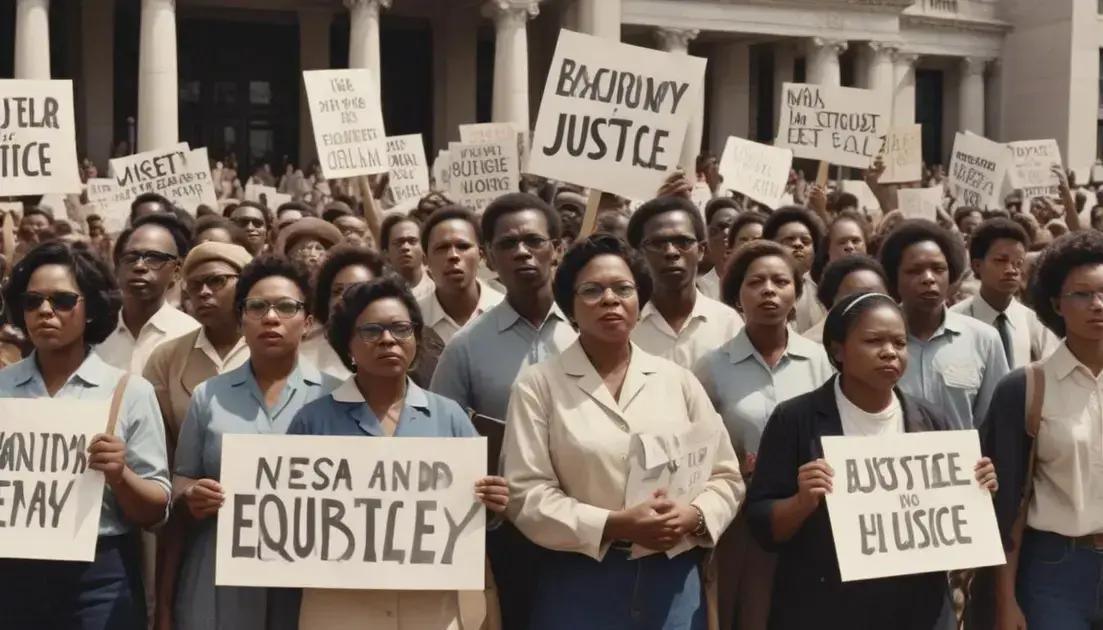
Women’s Strike in Iceland: The Day They Stopped the Country
The Women’s Strike in Iceland on October 24, 1975, was a historic protest where 90% of women refused to work, cook, or care for children, highlighting the critical role of women in society. This bold action brought significant changes in gender equality laws and inspired global movements for women’s rights. The strike emphasized the power of unity, persistence, and visibility in activism, leaving a lasting legacy that resonates in modern struggles for equality around the world.
On October 24, 1975, **Iceland Women’s Strike** changed everything! With 90% of women refusing work, the country came to a standstill. Curious about the impact? Dive in!
The Historical Context
The historical context of the Women’s Strike in Iceland is crucial to understand its impact. In the 1970s, women faced significant inequality in many parts of the world, and Iceland was no exception. Many women worked hard but were often paid less than men. This struggle for equality sparked a strong movement.
On October 24, 1975, Icelandic women took a bold step. They organized a nationwide strike, refusing to work, cook, or take care of children. About 90% of women participated. This striking action showed how vital women’s contributions are to society.
Before this event, women in Iceland were voicing their concerns about equal pay and better working conditions. Their voices gained momentum through various groups and campaigns. The combination of activism and solidarity created a powerful force that demanded change.
As news spread about the strike, women everywhere took notice. The events highlighted the importance of women’s rights and sparked discussions that resonated globally. The strike became not just a local event but an inspiration worldwide.
The impact was profound. Not only did it change laws in Iceland, but it also made women’s rights a focal point in global conversations. This moment in history remains a vibrant symbol of the fight for gender equality.
The Day of the Strike
The day of the Women’s Strike in Iceland was October 24, 1975. On this historic day, around 90% of women in the country participated. They chose to stop working, cooking, and even caring for children. This bold move was a powerful statement.
By not showing up at their jobs, women made it clear how important they were to society. Men had to take care of the children and household tasks, which highlighted the imbalance in gender roles. Many businesses faced challenges, as they suddenly lost a significant portion of their workforce.
The atmosphere that day was electric. Streets were filled with women, marching and chanting for equality. They carried signs that expressed their demands and hopes. This unified display of strength signaled a message that could not be ignored.
News quickly spread about the strike, drawing attention not just in Iceland but around the world. It became a vital part of the fight for women’s rights. The event showcased the everyday realities women faced and shed light on the need for change.
The success of the strike became a turning point in Iceland’s history. It led to advancements in women’s rights and inspired others globally. The day of the strike is remembered as a landmark moment in the quest for equality.
Impact on Gender Equality
The Women’s Strike in Iceland had a major impact on gender equality both in the country and beyond. After the strike, the conversation about women’s rights intensified. People began to see how vital women were to the economy.
In Iceland, the strike led to significant legal changes. Laws were passed to ensure equal pay for equal work. This direct action showed that collective voices could bring real change. It inspired many women to pursue leadership roles in politics and business.
While the impact was profound, it also served as a model for countries worldwide. Other nations looked at Iceland’s success and started their movements. Women’s organizations became more active everywhere, pushing for change and fairness.
The strike taught lessons about unity and strength. When women come together, they can create waves of change. The event showed that achieving gender equality is a shared goal that benefits everyone.
Through education and activism, the movement for women’s rights continues. The legacy of the strike still resonates today. It reminds us that the fight for equality is an ongoing journey.
Lessons Learned
The Women’s Strike in Iceland teaches many important lessons about activism and change. First, it shows the power of unity. When women came together, they caused a major impact. Collective action can lift voices and create awareness.
Secondly, it highlights the need for persistence. Even though the fight for equality is long, it is essential to keep pushing for change. Results don’t come overnight, but every effort counts.
Another lesson is about communication. Sharing stories and experiences can inspire others. When women spoke about their challenges, they sparked important conversations. These discussions can create strong connections and build support networks.
Additionally, the strike emphasizes the importance of visibility. Making issues public can pressure leaders to take action. The more people see the need for change, the more likely they are to support it.
Lastly, it reminds us to celebrate progress. Each victory, big or small, is a step forward. Recognizing achievements can motivate individuals to continue the fight for equality and fairness.
Modern Resonance
The Women’s Strike in Iceland still holds modern resonance. It inspires new generations fighting for equality today. The themes of the strike are relevant in many societies around the world. Issues like pay gaps and workplace discrimination still exist.
Today, women continue to rally for their rights. Movements like #MeToo and Time’s Up echo the spirit of the 1975 strike. They highlight the ongoing struggle against gender-based violence and inequality.
Society is now more aware of these issues, thanks to the brave actions of past activists. Many people understand the importance of fighting for change. The legacy of the Icelandic women’s strike encourages new avenues for activism.
Younger generations are now inspired to take part in activism. They learn about the strike in schools and see its impact online. This motivates them to organize their movements for justice and equity.
Moreover, today’s media plays a crucial role in raising awareness. Social media helps spread messages quickly. It connects people who care about equality worldwide, making the fight even stronger.
Conclusion
In conclusion, the Women’s Strike in Iceland is a powerful example of how collective action can spark change. It shows that when people unite for a cause, they can challenge inequalities and push for justice. The impact of the strike has been felt not just in Iceland but across the world.
The lessons learned from this event remain relevant today. Movements for gender equality continue to grow, with new generations inspired to fight for their rights. The fight is not over, and every voice matters.
As we reflect on the achievements of women in the past, it’s crucial to keep the momentum going. By working together and supporting one another, we can create a fairer future for everyone. Remember, every small action contributes to a larger movement toward equality and respect.


